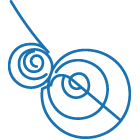Complementarity and the Nature of Uncertainty Relations in Einstein–Bohr Recoiling Slit Experiment
Abstract
A model of the Einstein–Bohr recoiling slit experiment is formulated in a fully quantum theoretical setting. In this model, the state and dynamics of a movable wall that has two slits in it, as well as the state of a particle incoming to the two slits, are described by quantum mechanics. Using this model, we analyzed complementarity between exhibiting an interference pattern and distinguishing the particle path. Comparing the Kennard–Robertson type and the Ozawa-type uncertainty relations, we conclude that the uncertainty relation involved in the double-slit experiment is not the Ozawa-type uncertainty relation but the Kennard-type uncertainty relation of the position and the momentum of the double-slit wall. A possible experiment to test the complementarity relation is suggested. It is also argued that various phenomena which occur at the interface of a quantum system and a classical system, including distinguishability, interference, decoherence, quantum eraser, and weak value, can be understood as aspects of entanglement.
Quanta 2015; 4: 1–9.
Full Text:
PDFDOI: https://doi.org/10.12743/quanta.v4i1.35
ISSN: 1314-7374

